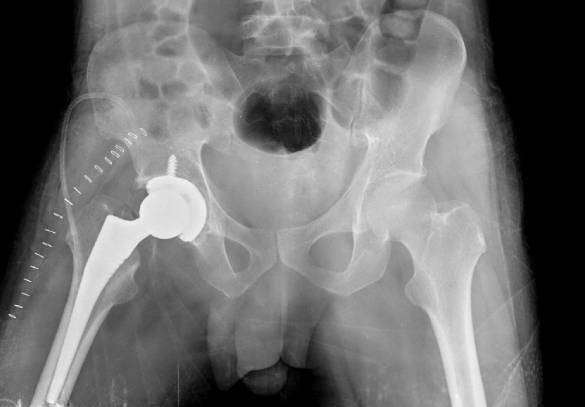The need for Total Hip Replacement (THR) Surgery arises when it starts causing difficulties in performing daily activities such as walking, sitting, and exercising. Some of the conditions that may necessitate this surgery include:
Osteonecrosis: When dislocation or fracture damages the blood supply to the ball portion (Femoral Head) of the hip joint, it can lead to bone collapse or deformities that affect the entire hip joint. This condition can be caused by medication side effects, systemic diseases, or it may occur without a known reason.
Rheumatoid Arthritis: This condition is characterized by an overactive immune system that produces severe inflammation, leading to the erosion of cartilage and underlying bone. This results in damaged and deformed joints.
How to Identify THR ?
We can identified it by its current symptoms, medical history, physical examination and X-rays. Adopt MRI and CT scan methods for accurate and fast results. This is an expensive method but is sufficient for the identifying the exact cause.
When is Total Hip Replacement Surgery Required?
• If the pain persists despite taking painkillers.
• Being unable to walk or use stairs even with support.
• Restricted hip mobility affecting daily activity.
• Discrepancy in limb length or difficulty standing up from a sitting position
• When you are unable to sleep because of persistent, dull or severe pain.
Do’s and Don’ts after Hip Surgery?
• Use an elevated toilet seat
• Use a chair that is the right height for you.
• Perform recommended exercise daily as suggest by doctor.
• Consult with good physiotherapist that will help to increase your range of motion and restore your strength.
• Do not bend over to touch your feet or reach below your knees after surgery.
• You must take care to ensure proper healing and prevent dislocation of the hip.
• Do not cross your legs, ankles as it may cause bone pain.
• Avoid the joint movement of flexing your hip and turning your foot inward
Note** Don’t bend your hip too far, Don’t lean forward while you sit down or stand up, and don’t bend past 90 degrees.
Risk and Complication after Hip Surgery?
As it is obvious like any major surgery, hip replacement surgery also carries some risks, which may include:
• Dislocations
• Infections
• Blood clots
• Nerve and artery injuries
• Delayed wound healing
• Fracture of the femur
• Differences in Leg length

